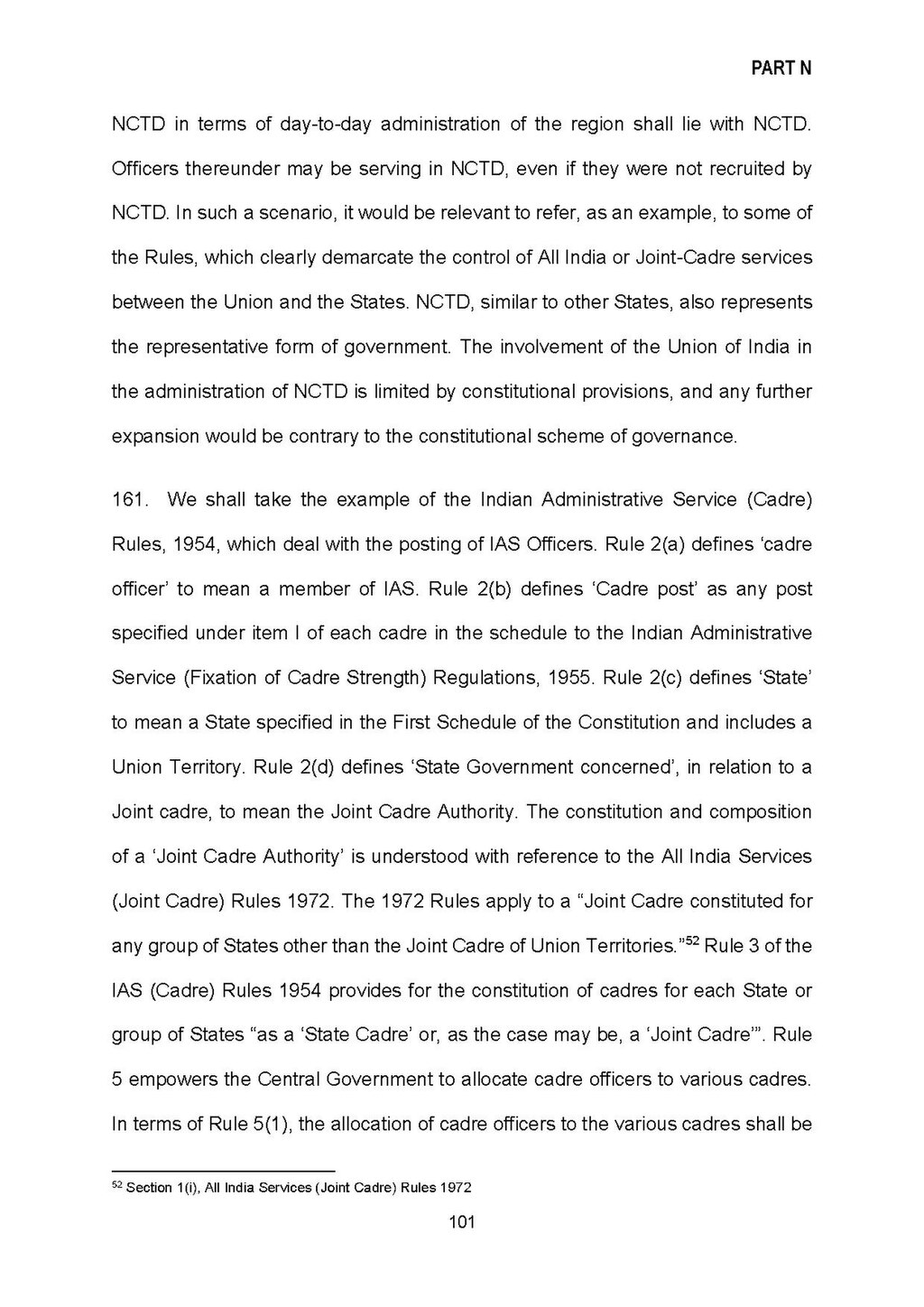NCTD in terms of day-to-day administration of the region shall lie with NCTD. Officers thereunder may be serving in NCTD, even if they were not recruited by NCTD. In such a scenario, it would be relevant to refer, as an example, to some of the Rules, which clearly demarcate the control of All India or Joint-Cadre services between the Union and the States. NCTD, similar to other States, also represents the representative form of government. The involvement of the Union of India in the administration of NCTD is limited by constitutional provisions, and any further expansion would be contrary to the constitutional scheme of governance.
161. We shall take the example of the Indian Administrative Service (Cadre) Rules, 1954, which deal with the posting of IAS Officers. Rule 2(a) defines ‘cadre officer’ to mean a member of IAS. Rule 2(b) defines ‘Cadre post’ as any post specified under item I of each cadre in the schedule to the Indian Administrative Service (Fixation of Cadre Strength) Regulations, 1955. Rule 2(c) defines ‘State’ to mean a State specified in the First Schedule of the Constitution and includes a Union Territory. Rule 2(d) defines ‘State Government concerned’, in relation to a Joint cadre, to mean the Joint Cadre Authority. The constitution and composition of a ‘Joint Cadre Authority’ is understood with reference to the All India Services (Joint Cadre) Rules 1972. The 1972 Rules apply to a “Joint Cadre constituted for any group of States other than the Joint Cadre of Union Territories.”[1] Rule 3 of the IAS (Cadre) Rules 1954 provides for the constitution of cadres for each State or group of States “as a ‘State Cadre’ or, as the case may be, a ‘Joint Cadre’”. Rule 5 empowers the Central Government to allocate cadre officers to various cadres. In terms of Rule 5(1), the allocation of cadre officers to the various cadres shall be
- ↑ Section 1(i), All India Services (Joint Cadre) Rules 1972
101
